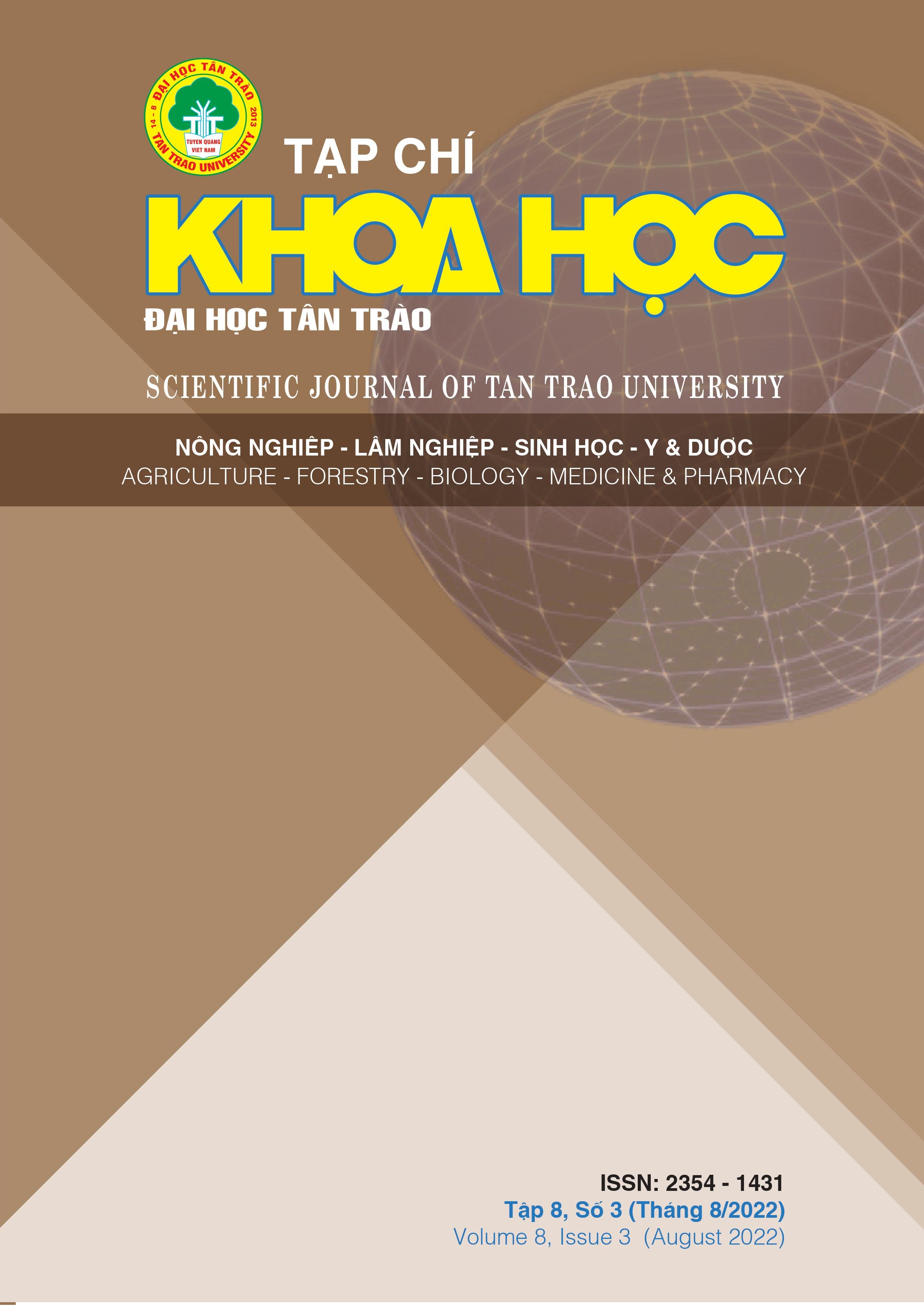SPECIES COMPOSITION OF GASTROPOD MOLLUSCS (GASTROPODA: MOLLUSCA) IN LAN CHAU AND HON NGU ISLANDS OF CUA LO, NGHE AN PROVINCE
DOI:
https://doi.org/10.51453/2354-1431/2022/809Keywords:
Mollusca, average density, biodiversity, research areaAbstract
Research on the composition of terrestrial gastropod mollusks in Lan Chau and Hon Ngu islands in Cua Lo sea area (Nghe An) was carried out in August 2022. The analysis results show that there are 5 species, 5 genera and 4 families. Through the study, it was found that terrestrial gastropod molluscs in the study area usually live in places with temperatures from 20.10C - 240C, humidity from 85% to 89.1%.
Terrestrial gastropod molluscs are usually distributed in places with thick rotten mats or under low light substrates: In Lan Chau Island, 4 species were identified, with the normal density of all species being 30.3 ind/m2; At Hon Ngu island, 3 species have been identified with the average density of all species being 15.87 ind/m2. Research results have determined that the biodiversity index of terrestrial gastropod molluscs in Hon Ngu island is less diverse than in Lan Chau island.
Downloads
References
[1]. Chinh Bui Thi, Nhuong Do Van, Thanh Ngo Dac (2020), Diversity of terrestrial gastropod molluscs (Mollusca: Gastropoda) in Nam Dong, Thua Thien Hue. Science Journal of Hue University: Natural Science. Episode 129, No. 1C, 51–57.
[2]. Nguyen Thanh Tung, Nguyen Van Be (2016). Preliminary data on terrestrial snails in some islands in Kien Hai district - Kien Giang. Scientific Journal of Can Tho University, No 45: P 97-109.
[3]. Cameron R.A.D., Eversham B., Jackson N (1983), “A field key to the Slugs of the British Isles (Mollusca: Pulmonata)”, Field Studies, 5, P 807-824.
[4]. Dinarzarde C. Raheem, Thierry Backeljau, Paul Pearce - Kelly, Harry Taylor, Jonathan Fenn, Chrasak Sutcharit, Somsak Panha, Katharina C.M. Von Oheimb, Parm Viktor Von Oheimb, Chiho Ikebe1, Barna Pall-Gergely, Olivier Gargominy, Luong Van Hao, Pham Van Sang, Do Van Tu, Dinh Thi Phong, Manel Naggs, Jon Ablett, Jackie Mackenzie Dodds, Christopher M. Wade & Fred Naggs (2017), An illustrated guide to the land snails and slugs of Vietnam, The Natural History Museum, London, UK. P 1- 12.
[5]. Fischer, P. (1883), Sur les Urocyclus et les Vaginula de Nossi-Bé et de Nossi-Comba et Mayotte. Journal de Conchyliologie. 31(1): 54-56.
[6]. Kobelt W (1902), Cyclophoridae, Das Tierreich, 16 662.
[7]. Krebs, C. J (1989), Ecological Methodology, Harper and Row Publishers, New York. pp. 654.
[8]. Martens, E. von. (1867), Die Landschnecken. Die Preussische Expedition nach Ost-Asien. Nach amtlichen Quellen. Zoologischer Teil. Zweiter Band: XII + 447, 22 plates; Königliche Geheime Ober-Hofbuchdruckerei, Berlin., available online at https://biodiversitylibrary.org/page/12890925 page(s): 68, plate 5, fig. 3.
[9]. Möllendorff O. F (1901), Diagnosen neuer von H. Fruhstorfer in Tonking gesammelter landschnecken, Nachrichtsblatt der Deutschen Malakozoologischen Gesellschaft, 33 110.
[10]. Möllendorff, O. F. von. (1882). Diagnoses specierum novarum Chinae meridionalis. Jahrbücher der Deutschen Malakozoologischen Gesellschaft. 9: 179-188. Frankfurt am Main., available online at https://biodiversitylibrary.org/page/16359972, P: 182.
[11]. Schileyko, A. A (2011), Check-list of land pulmonate molluscs of Vietnam (Gastropoda: Stylommatophora), Ruthenica. 21.
[12]. Shannon, C. E. and Weiner, W (1963), The mathematical theory of communities. Illinois Urbana University, Illinois Press.
[13]. Vermeulen, J. J. and Maassen, W. J. M (2003), The non-marine mollusk fauna of the Pu Luong, Cuc Phuong, Phu Ly and Ha Long regions in northern Vietnam. Report of a survey for the Vietnam Programme of FFI, pp. 1-35.
[14]. Wiktor A., Chen D., Wu M. (2000), “Stylommatophoran Slugs of China (Gastropoda: Pulmonata), Prodromus”, Folia Malacologia, 8(1), pp. 3-35.
Downloads
Published
How to Cite
Issue
Section
License

This work is licensed under a Creative Commons Attribution-ShareAlike 4.0 International License.
All articles published in SJTTU are licensed under a Creative Commons Attribution-ShareAlike 4.0 International (CC BY-SA) license. This means anyone is free to copy, transform, or redistribute articles for any lawful purpose in any medium, provided they give appropriate attribution to the original author(s) and SJTTU, link to the license, indicate if changes were made, and redistribute any derivative work under the same license.
Copyright on articles is retained by the respective author(s), without restrictions. A non-exclusive license is granted to SJTTU to publish the article and identify itself as its original publisher, along with the commercial right to include the article in a hardcopy issue for sale to libraries and individuals.
Although the conditions of the CC BY-SA license don't apply to authors (as the copyright holder of your article, you have no restrictions on your rights), by submitting to SJTTU, authors recognize the rights of readers, and must grant any third party the right to use their article to the extent provided by the license.


